Greetings from Camp Bread
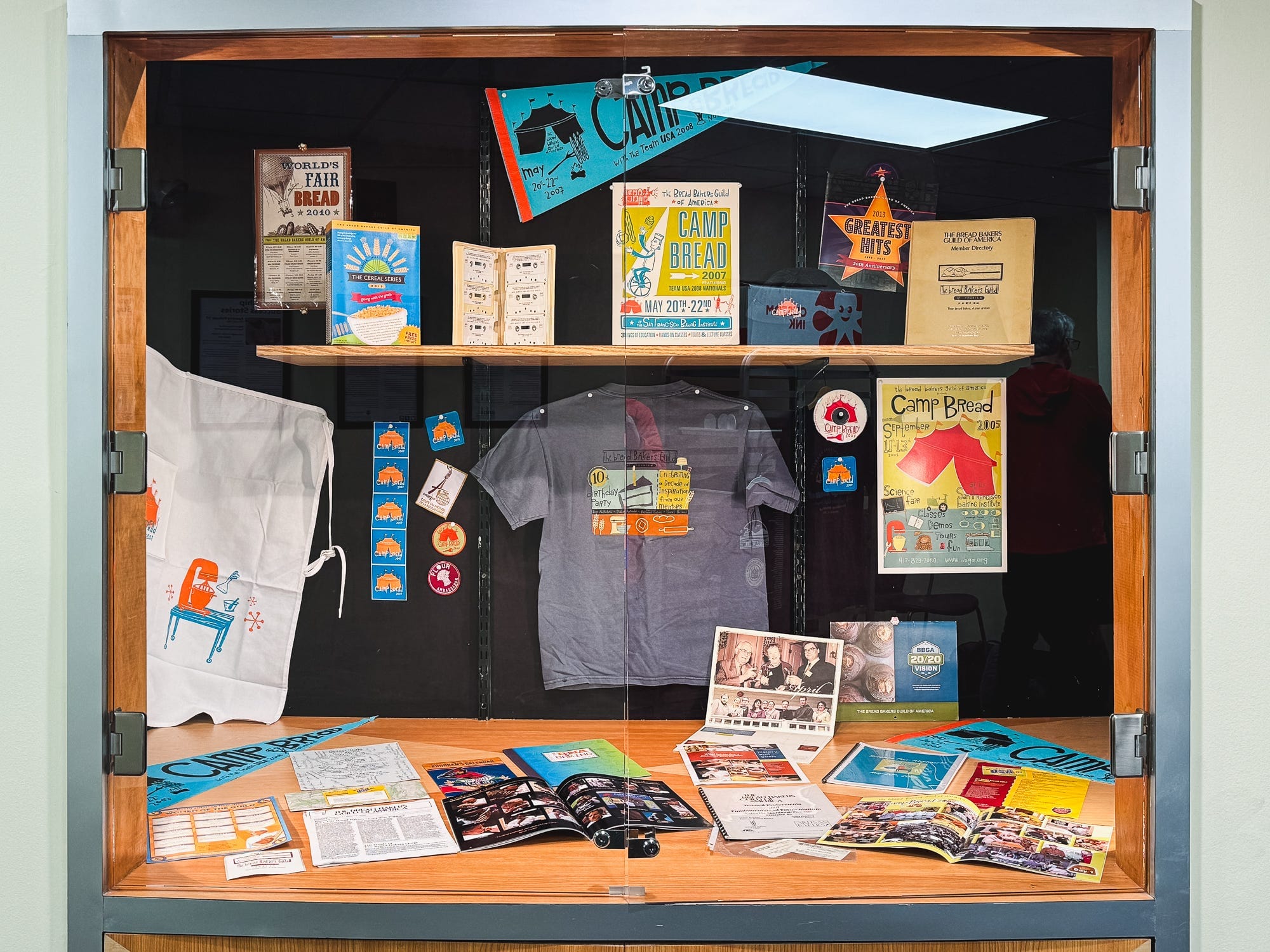
Two weeks ago, Andrew and I were on the second day of Camp Bread. We were over the first-day jitters and were absorbing mountains of baking information:
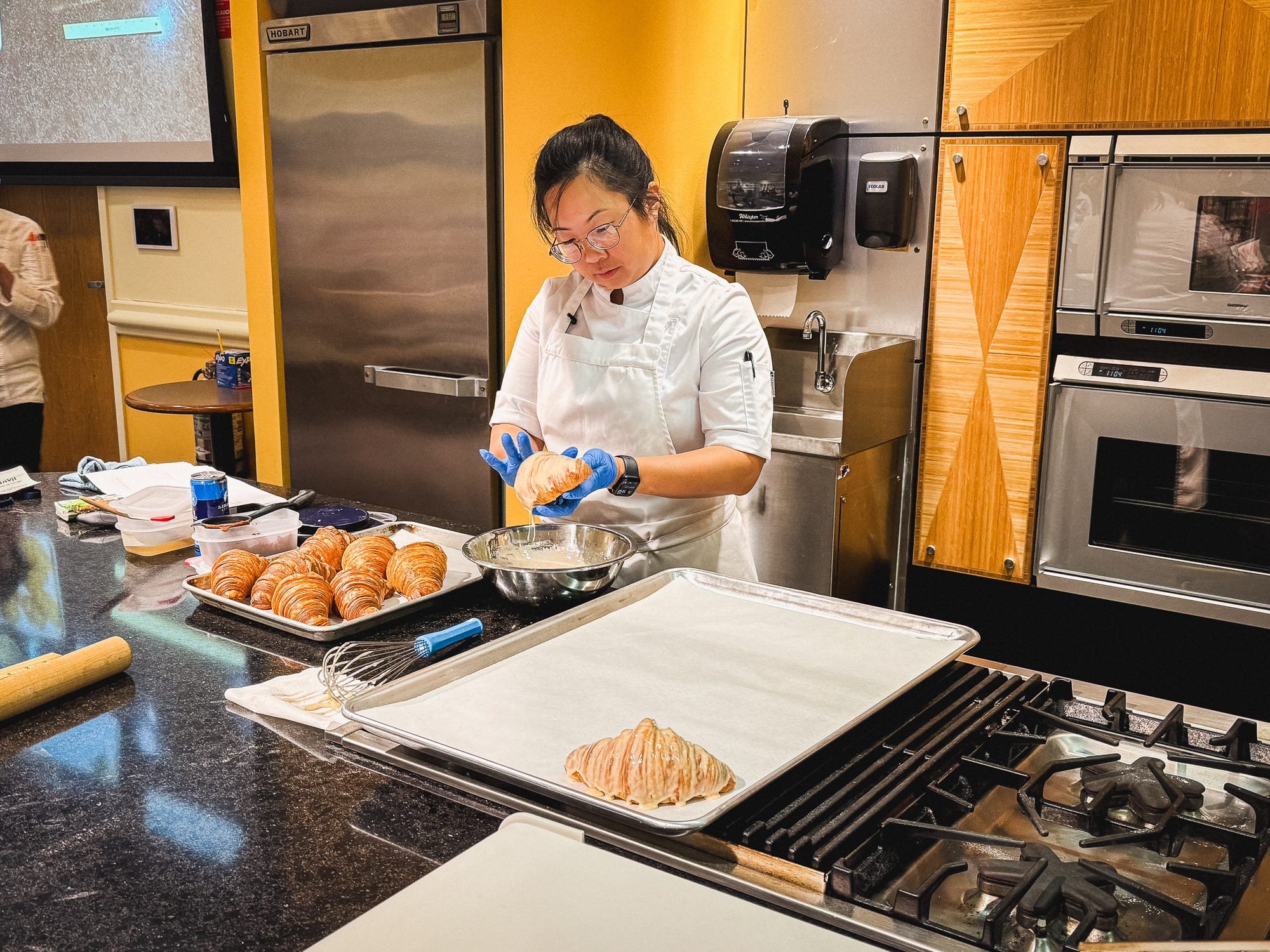
Hana Quon’s demonstration of lamination techniques (black sesame with pastry cream filling on a croissant!).
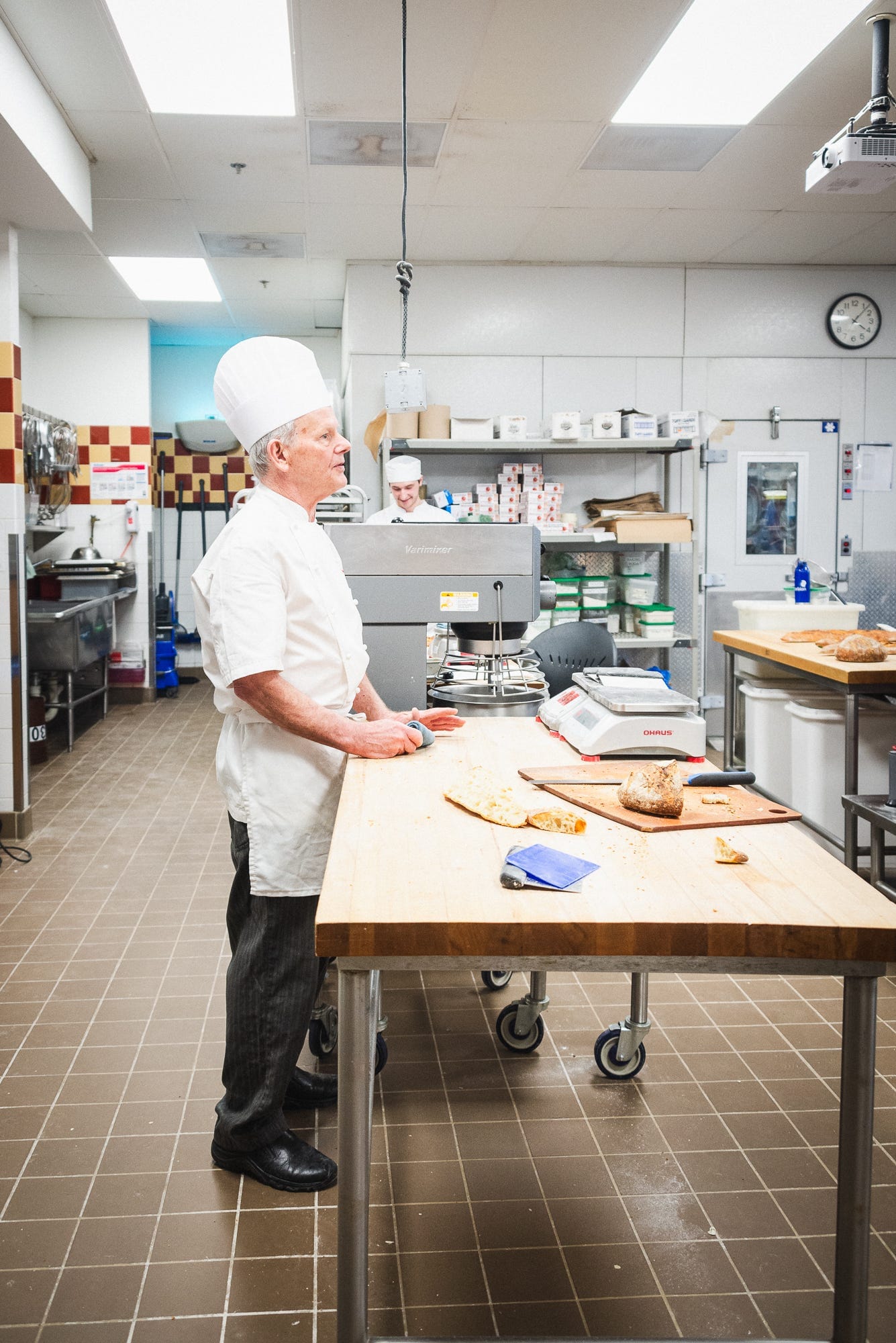
Jeffrey Hamelman and Didier Rosada were teaching full-day classes.
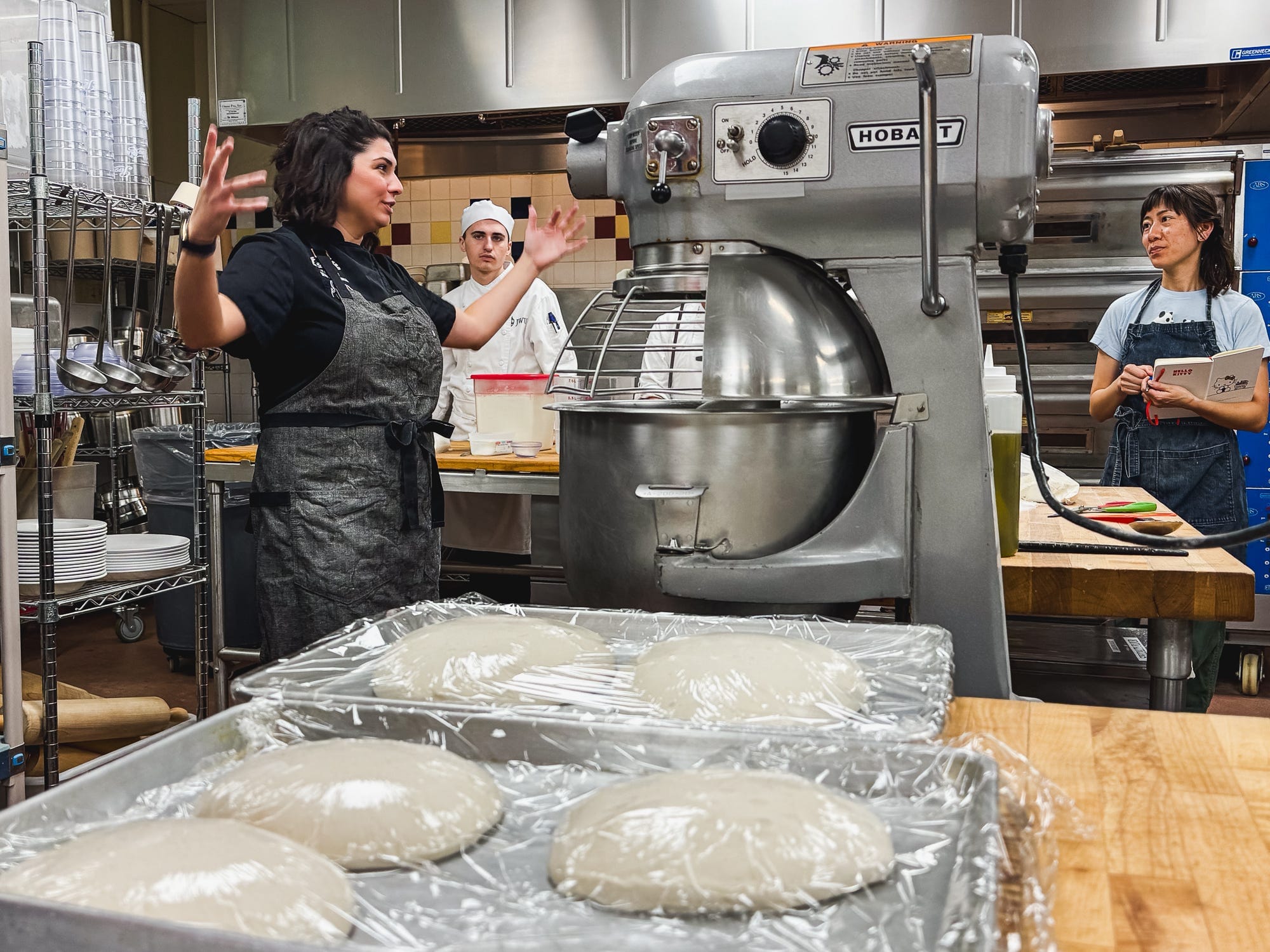
Nicole Bean was downloading amazing pizza intel; and the sponsors were setting up tables in an atrium, ready to lure us with bench scrapers, chocolate samples, and COFFEE!
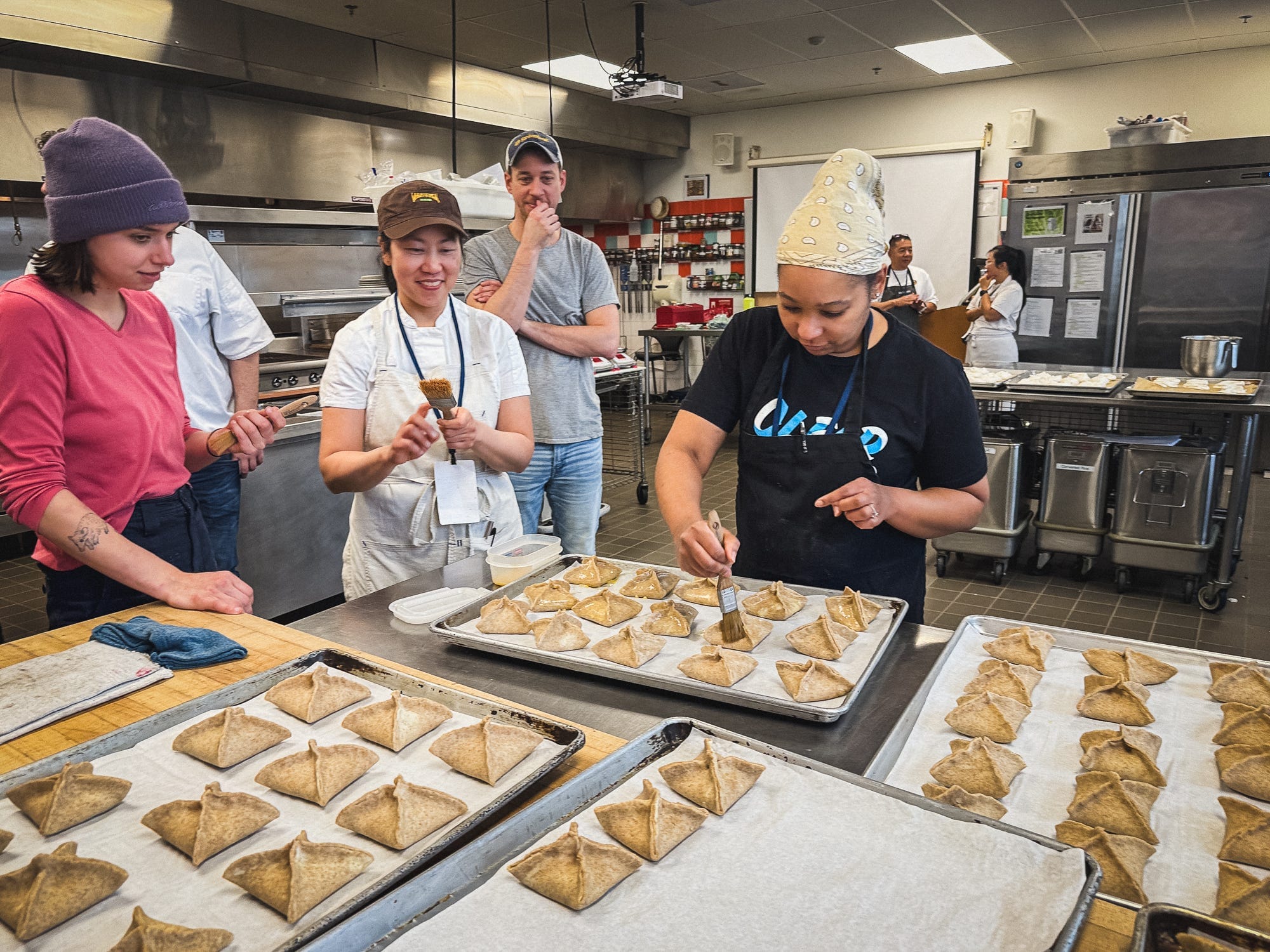
Daisy Chow from Breadboard Bakery taught a class in sweet and savory fillings twice, once in the morning and again in the afternoon. The raspberry kolaches! The curried chickpea turnovers! AND I didn’t get to sample another bunch of classes that day, Wednesday, March 6. Tuesday and Thursday were equally stacked with learning opportunities.
The Bread Bakers’ Guild of America lined up a stellar batch of instructors and offered a range of business and production topics. There was a good blend of hands-on courses and demos, talks on the many nuts and bolts of baking enterprises that were geared to a variety of bakery sizes. And stewards of my favorite niche of baking, fresh flour, were present.
Midwest grain group AGC sent Jill Brockman-Cummings from Janie’s Mill to speak on a panel, and their Bakers Working Group Coordinator Marissa Venturi surfed classes with me.
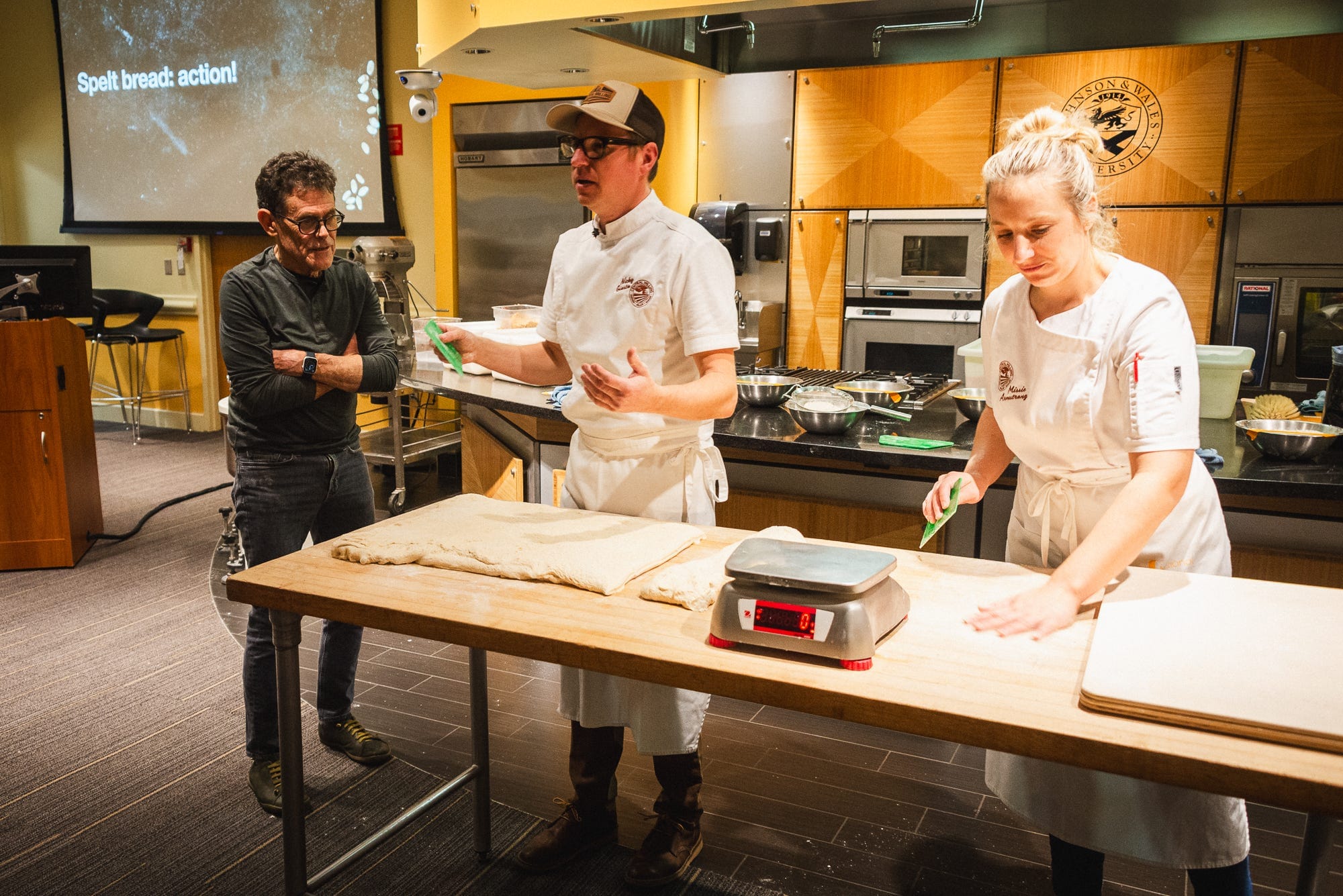
Nicky Guisto from Central Milling came to speak and teach about working with spelt flour.

And Andrew Heyn brought one of his New American Stone Mills for a daylong milling session; Blair Marvin, his mate in work and life, gave her own full-day course on naturally fermented breads from freshly milled flours, which included deep analysis of grain varieties. Thom Leonard’s class looked at heirloom and landrace wheats, and experimented with strategies for approaching doughs made with these flours.
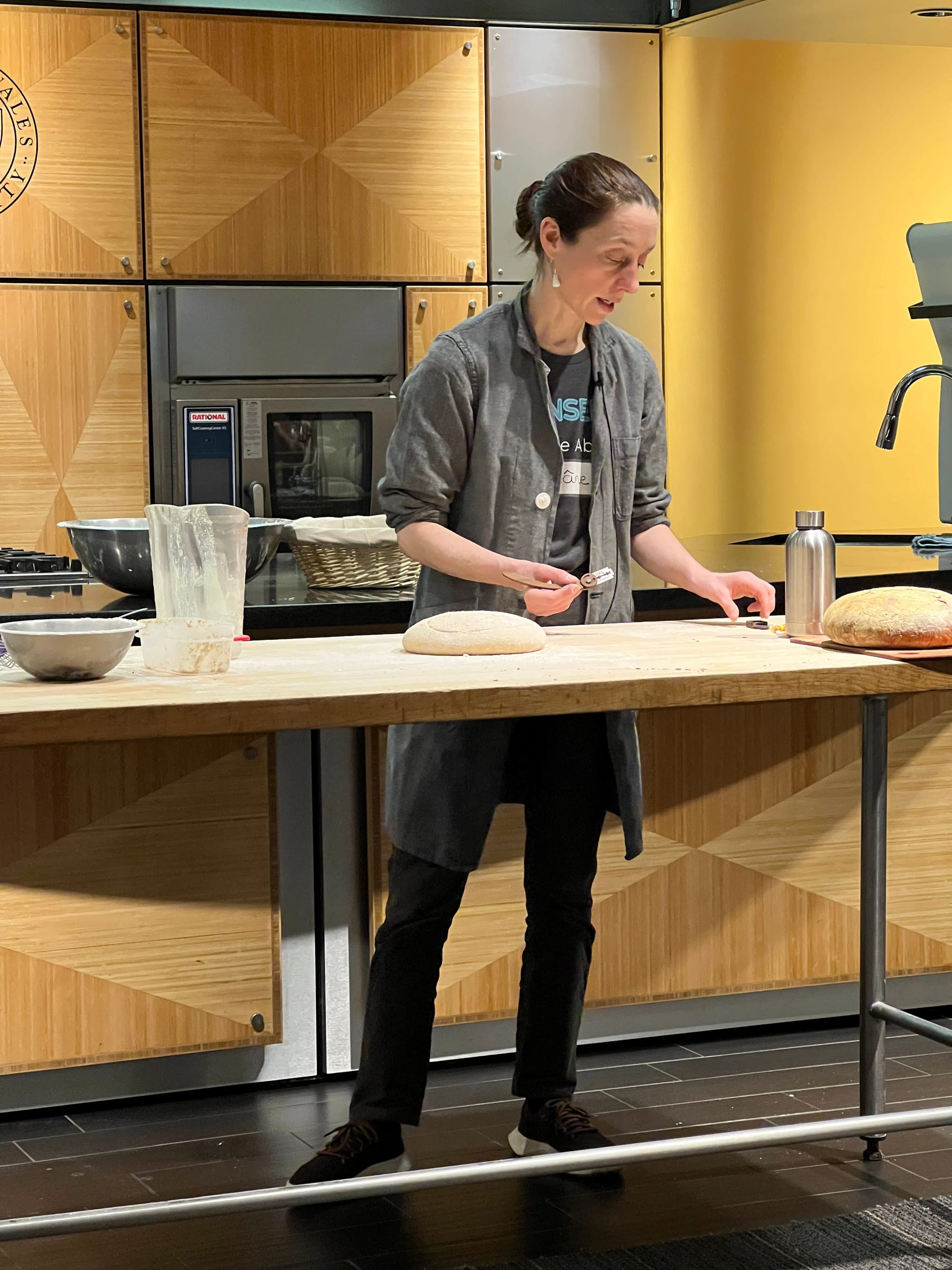
Apollonia Poilâne gave a presentation about her family’s third generation bakery in Paris, and I was glad to learn that their flour is stoneground—my preferred style. In fact, her talk and demonstration felt a little like church—not for regional grains, but for the craft of baking.
The amphitheater where she spoke is almost a cooking cathedral: raked seating face an elaborate demonstration kitchen, with counters, a stove, an oven, a handwashing station, and cameras and screens to post the action large and on either side of the demo. Everything that happened here felt special, just because of the fixtures and design.
But the measured pace of her words, and the respect the world has for this bakery leant her talk an extra measure of regard. Apollonia described her family’s bakery as if she were walking us through it. Often, her head was tucked down, as she concentrated on getting the details correct. Her grandfather, she said, chose to distinguish himself by making wheat sourdough bread after WW1. “The bakery syndicates were powerful and urged him not to bake this old style of bread,” she said. But he met a following of artists and craftspeople, and he made big hugs of bread. Hugs? I thought, and wrote the word hunk instead in my notebook. But she repeated the word in describing the miche as hug of a bread. Oh yes!
I want to tell you about two classes in particular: Harry Peemoeller’s Pondering Rye and Susan Chagas and Hazim Tugun’s from Zingerman’s Bakehouse, who focused on savory handheld breads. I wish I could have stayed with these all day classes all day!
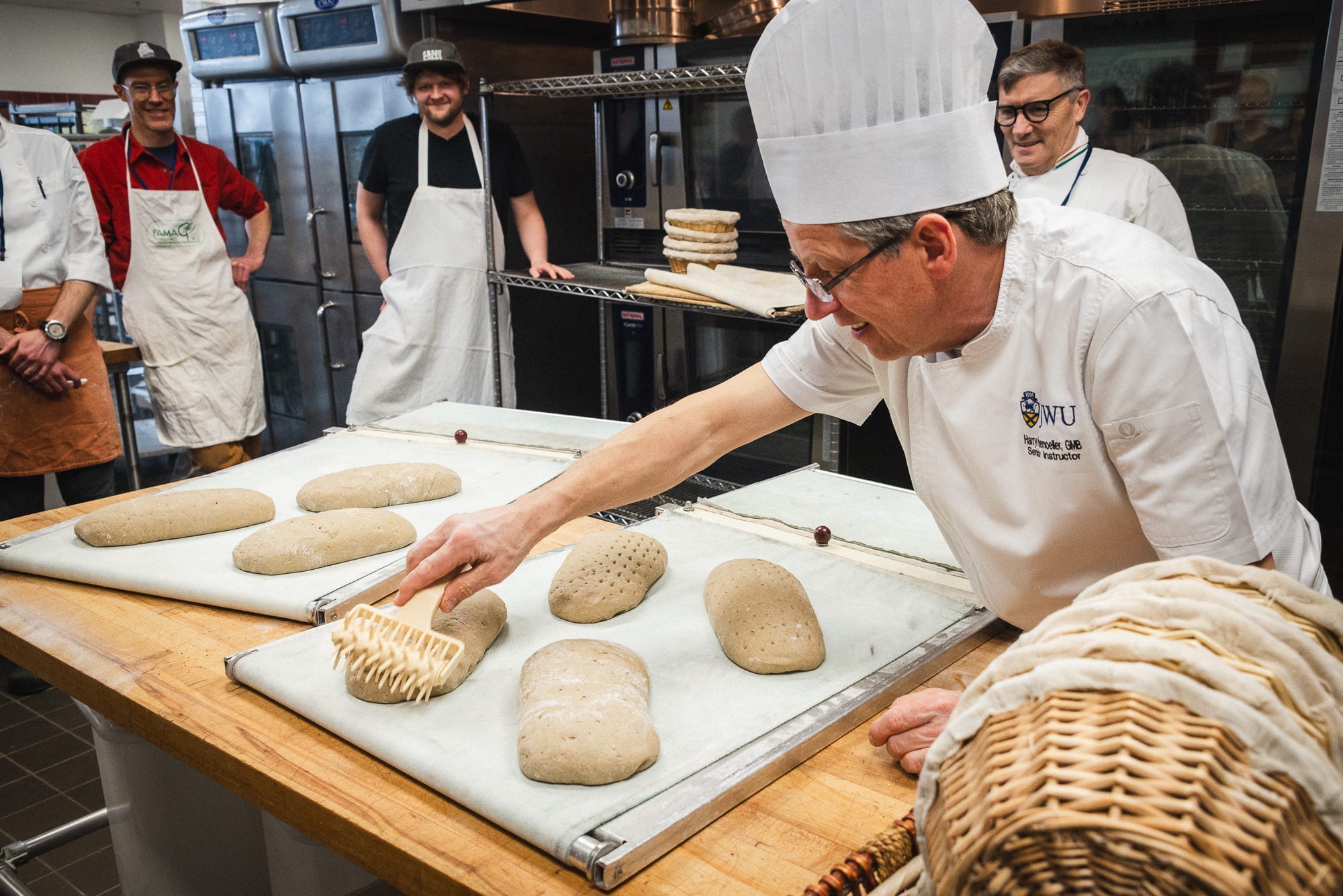
Harry is hilarious, calling savory rye danishes “The People’s Croissants”—these were basically a sandwich dough laminated with lots of butter. Tidbits worth sharing:
- A long mix will help incorporate and encapsulate coarse bits of soaker and seeds in a rye, and there’s no concern of oxidation because rye does not oxidize like wheat.
- Too much yeast or too brief a mix will make a crumbly dough.
- Old bread is starch resistant, and soaking it makes a gel that helps extend shelf-life.
Susan Chagas runs the baking education program at Zingerman’s, and Hazim Tugun is the bread manager; they mill whole-grain flours on two New American Stone Mill. The recipes in this class used a lot of fresh-milled flour, and as they walked students through making and shaping the doughs, they offered guidance. Working with whole grains can be disconcerting because the flour is so different but fear not! You are going to get something delicious and nutritious. Take notes because you learn as you go.
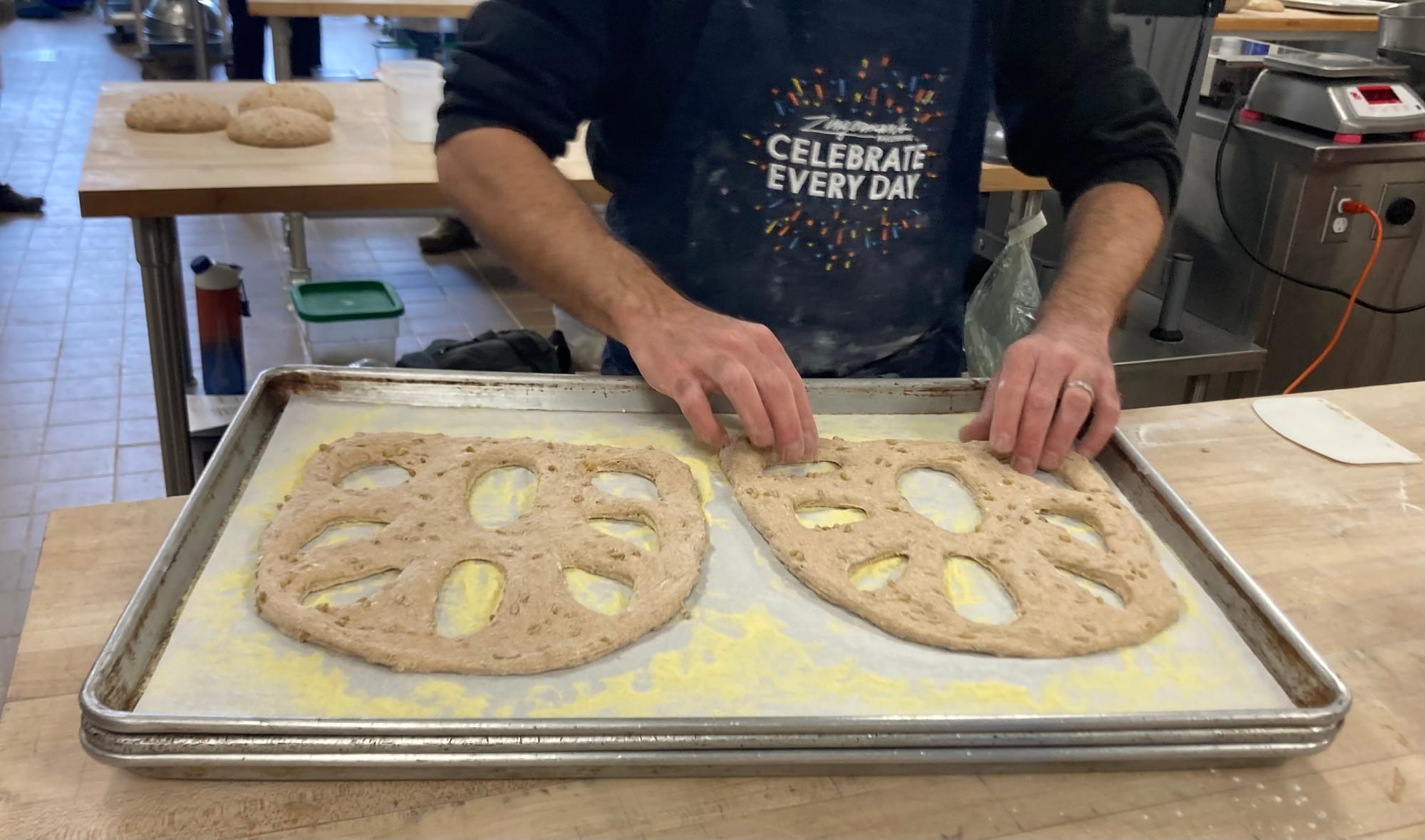
I shaped my first ever bagel with Susan, and my first ever fougasse—studded with incredibly smoky freekeh1—with Hazim. When we ate a quick lunch, Hazim reflected on how important bread is to his father, who is from Turkey. Every meal includes bread. America has so many options, he suggested, that we’ve lost the sense of primacy of bread, this basic fantastic food that is at the root of so many diets. Hazim also preached to the fresh-flour choir, evangelizing that “You and your senses come alive with fresh flour. You have to be more on edge in a good way.”
These nuggets were the frosting on the cake, or they were the cake, or really, they were the bread of the matter, feeding me. We were feeding each other information and inspiration.
There is a saying that the best part of a conference being the conversations you have outside of the presentations. Maybe, but also, it’s being with your bread buddies during those sessions, sitting shoulder to shoulder and eating a great feast of ideas. I’m still quite full from Camp Bread, and incredibly thankful to Johnson & Wales University for hosting it on their spring break. Extra thanks go to Richard Miscovich, JWU prof and author of From the Wood-Fired Oven. He did not teach at Camp Bread but he spent the last 18 months organizing the event with his colleagues at JWU, BBGA, and the students who stayed on campus to make everything sail. The amount of work that went into making this container for baking, learning and exchange is phenomenal. While I’m passing out the thanks, many also go to Andrew, who gathered formulas from instructors and got them ready for students. (The bulk of the pictures in this post are his, too!) A herd of BBGA and JWU folks were busy making this hum, and cleaning up once we took our inspiration home.
Where, dear readers, do you love to learn with other bakers? Please tell us places you’ve loved attending so we can plan our future connections!
Freekeh is a green harvested durum, and gains its smoky flavor from the stalks getting burnt. Really worth a try! Read about it here. ↩





Member discussion